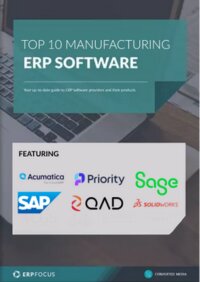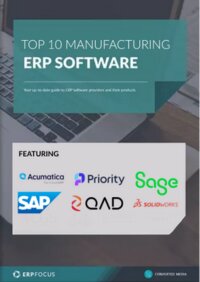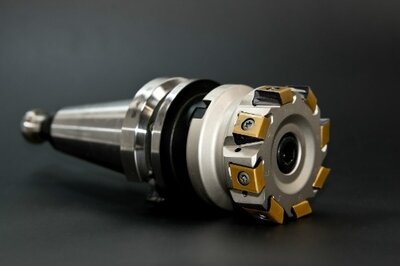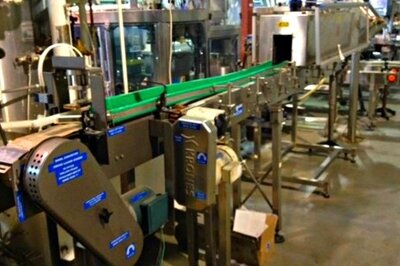ERP and quality management
When looking at the menu structure of ERP systems, it is clear that most departments, from Manufacturing to Finance, from Sales to Purchasing, are represented, but few systems have an explicit Quality menu. This leads many people to conclude that there is nothing for the Quality Department in ERP when that is not the case at all; especially in companies where the role of quality has been extended beyond just identifying rejects to actively helping to prevent them.
Looking at purchased items first; the necessity of preventing sub-standard items from getting onto the shelves or onto the production line remains absolute and carrying out relevant checks is not only an important contribution but is also something that ERP can help with.
Some companies can find, especially when different materials have different inspection requirements, that they have peaks and troughs in their inspection workload and, in consequence, a backlog can occur. This can result, for distribution companies, in gaps on the shelves and, for manufacturing companies, in disruption to production.
But ERP 'knows' what is coming in and 'knows' what is immediately required, so relevant information can be extracted to prioritize their workload and not only to highlight the items that are urgently required but also to identify those items that are not urgent and can wait their turn.
And it can go further. When companies are buying new items from new suppliers, they may want to inspect every delivery, but after time confidence will build and they may only want to fully inspect occasional deliveries. Some, though not all, ERP systems offer this option; so companies can decide that particular items only need an inspection on every second, fifth, or tenth delivery or whatever they consider suitable. That can considerably reduce the workload on inspection staff.
A lot of this depends on identifying particular deliveries and this depends, in turn, on the ability of the system to hold data at a batch number level, a serial number level, or both. Thankfully, most ERP systems can do this and by doing so, facilitate comprehensive analysis that can identify which suppliers are the most problematic and which items fail inspection most frequently; and that is precious information.
All that has been said of purchased items holds for manufactured items also but, with these, quality management can contribute even more, whilst getting even more help from ERP. Doing quality management at the level it should be done is never easy, but there is an extra dimension to be considered in manufacturing because there the team not only has to consider the failure of items but also the failure of manufacturing processes.
So there can be a failure at the point of component receipt, there can be a failure of components during the production process, and there can be a failure of the manufactured item.
With quality checks being carried out throughout the manufacturing process, at component, sub-assembly, and finished item levels, a mountain of data is available. If properly structured, that data becomes information and, if properly analyzed, that information becomes knowledge.
Manufacturing companies have two tools to help them structure this data: their bills of material and their manufacturing routings.
The bill of material structure enables quality to be measured at assembly and sub-assembly levels and that allows companies that have common materials to know if some of those fail more often in particular sub-assemblies and if some of those sub-assemblies fail more often when used in particular assemblies.
Linking rejects or replacements to the Works Orders on which they were consumed facilitates that analysis, particularly when analysis codes are used on those transactions. When added to traceability, companies can now know which suppliers are the most problematic, which materials or components are the most problematic, which processes are the most problematic, and what is going wrong with materials in those processes.
And using the manufacturing routings on Works Orders can take things a step further. The routing defines which machines and/or skill groups are used to perform each operation. But many companies have multiple resources that can be used on any particular job; so an engineering company might, for example, have several lathes or CNC machines, and a furniture manufacturing company might have several upholsterers.
When manufacturing progress is reported, there will be an opportunity to record which actual resource was used, and that adds appreciably to the data available for analysis. Companies can then identify resources that produce an above-average number of rejects.
Perhaps some machines need to be re-calibrated or replaced; perhaps some people need more training.
In some industries, though, the sub-standard product doesn't always have to be scrapped because it can be possible to repair or rework it. To do this in a controlled way, ERP offers two choices. One is that rework operations can be added to the routing of individual works orders, and extra or replacement items can be added to the bills of material at that level also.
An alternative is to raise specific rework work orders with tailored routings and bills; the choice is dependent largely on the ease with which specific ERP systems allow these changes. Doing these things enables the work to be scheduled, with the workload being visible at each required machine or work center, and allows materials requirements to also be visible and capable of being issued using regular procedures.
Few companies consider the economics of reworking products. Sometimes that is because production lead times are such that they have no option if they want to keep delivery promises, and sometimes it is because it appears self-evident that it will be cheaper to rework than to remake.
However; when using either of the works order options previously discussed, collecting actual cost data is very easy and, in fact, almost automatic. That ensures that there are no gray areas when deciding in the future whether to rework or not, and it also tells the company exactly how much quality failures are costing them.
And it can tell them this at a product level or a manufacturing resource level. When companies are operating on tight profit margins, this knowledge can be crucial.
It is clear that quality has a cost, and that ERP systems can provide essential information to both help measure it and help minimize it.
Free white paper

Top 10 Manufacturing ERP Software Comparison
Compare the best manufacturing ERP systems

Related articles
-

What can ERP do to support your manufacturing quality control department?
What can ERP do for your quality control?
-

CMMC Compliance: What Aerospace and Defense Manufacturers Need to Know
Key insights on CMMC compliance, deadlines, and securing DoD contracts with CMMC 2.0 certificatio...
-

Process Manufacturing Requirements: Quality Control
Quality control is an is important aspect of process manufacturing and your ERP can support it

